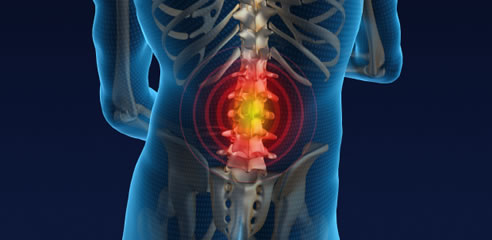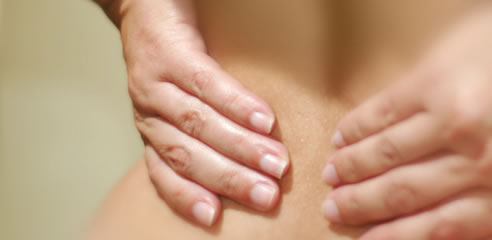
|
|
|
Call our offices at: (310) 274-3481 (800) 964-0404
Beverly Hills
9301 Wilshire Boulevard
Suite 406A
Beverly Hills, California 90210

|
|
 |
|
|
INSURANCE & WORKERS' COMPENSATION
ACCEPTED!
We accept most types of
insurance
providers and specialize in the treatment of
workers' compensation injuries to the hand and upper extremity. |
|
 |
|
Lower Back Pain
Lumbar Radiculopathy (Sciatica)
Herniated Disc
Nearly everyone at some point suffers from lower back pain. Lower back pain is second only to headaches in its rate of occurrence and is a major cause of work-related disability in the United States. Fortunately most mild episodes of lower back pain resolve spontaneously with correct conservative management administered by a physician. When lower back pain persists for 3 months or longer it is referred to as chronic low back pain, which may be progressive and a sign of more serious conditions. It is always best to visit a board certified physician specializing in this area to address diagnosis and treatment options for acute or chronic lower back pain.

The lower back is comprised of the "lumbar" spinal column and an array of intricate axial muscles, tendons and ligaments which serve to stabilize and support the weight of the upper body. The lumbar spinal cord travels through the spinal column, delivering motor and sensory function to the lower trunk and the lower extremities. The lumbar vertebrae L1 – L5 are connected to the sacrum and the coccyx ( tail bone). The vertebrae are separated by the intervertebral disks which function as shock absorbers, and give the spinal column elasticity and flexibility. The lumbar nerve roots L1-L5 emerge from the spinal vertebrae to provide sensation to the skin and function to the pelvic organs and muscles of the thighs and upper portions of the lower extremities.
Conditions that cause lower back pain range from acute stretching or compressive forces that exist in routine daily function, work-related activities, and sport-related injuries, to underlying pre-existing pathologies such as congenital spinal stenosis, autoimmune disease, malignancy, and degenerative conditions such as osteoporosis. With the presence of persistent or severe lower back pain, it is therefore essential for the patient to avoid self diagnosis and seek consultation by a specialist.

Lumbar Radiculopathy (Sciatica)
Sciatica is a general term which refers to the constellation of symptoms including lower back and buttock and lower extremity pain resulting from the compression of nerve roots as they emerge from the lumbar vertebrae. This can result from herniation or protrusion of the intervertebral disks also referred to as “bulging disks”. Bulging disks can be caused by sudden compressive forces as generated during athletic activities or from a chronic degeneration and weakening of the intervertebral disks and their supporting ligaments as seen with chronic poor posture, aging and the resultant weakening of muscles. Compression of the central spinal nerve roots by a disk bulging into the spinal canal can cause a serious condition referred to as the cauda equina syndrome which can be a neurosurgical emergency and can lead to permanent neurological loss if not addressed appropriately. Patients presenting with lumbar radiculopathy can experience decreased sensation, pain, and weakness in the lower back radiating down to the buttocks and into specific distributions in the lower extremities depending on which nerve roots are compressed. The patient can often present with a list, or shifting of the body away from the side of the bulging disk during walking. Patients experiencing any form of lower extremity weakness, bladder or bowel dysfunction related to lower back pain should seek urgent medical attention to evaluate serious causes and to receive appropriate early treatment.
Lumbar radiculopathy is best diagnosed, after history and physical examination, with magnetic resonance imaging (MRI) of the lumbar spine. Clinical findings, X-ray and MRI results, and blood tests can help to guide the diagnosis as lower back pain may result from a wide range of conditions such as low back strain, arthritis, lumbar bursitis, osteoporosis , anatomic spinal anomalies such as scoliosis or kyphosis, and chronic medical conditions such as fibromyalgia and auto-immune disease.
The majority of low back pain cases can be treated without surgery. Early treatment often involves a multi-modality approach including bed rest (1-2 days at most), physical therapy including heating and ultrasound treatments, massage, guided stretching and conditioning exercises, acupuncture, and biofeedback. Medications may include over-the-counter pain medications and counter-irritant creams, muscle relaxants ,antidepressants, and stronger prescription analgesic drugs.
Interventional pain management can be very effective in treating the majority of cases of resistant lumbar radiculopathy through careful application of minimally invasive procedures such as steroid or analgesic epidural nerve blocks, vertebroplasty or kyphoplasty, and nerve root blocks via spinal cord stimulation. Recent advancements in medical technology allow the pain management specialist to treat most cases of low back pain using conservative and less invasive measures. Return to a normal healthy state almost always requires a multimodality approach including physical therapy, exercise, and patient willingness. Epidural nerve blocks and steroid injections very commonly help to calm down the pain cyle and are very effective in decreasing the longterm use of opioid drugs, and increasing the effectiveness of other conservative measures.
Since invasive back surgery is not always successful, it remains an option in progressive cases where conservative management has not been successful, or in acutely severe conditions where surgery is the only option.
Herniated Disc
A herniated disc is defined as a rupture in the intervertebral disc caused by normal wear of aging or injury. The spine is made up of bones, or vertebrae, and discs that are located between vertebrae and act as shock absorbers and allow the spine to twist and bend. The discs consist of a soft inner nucleus and a tough outer wall called the annulus fibrosis. A herniation occurs when there are small tears in the annulus and a small portion of the nucleus is pushed out into the spinal canal. This bulging can compress nerve roots and the spinal cord resulting in pain. The pain associated with disc herniation is a burning, tingling or numbing sensation that can emanate down the limbs. Treatment includes rest, immobilization, anti-inflammatory and pain medication, steroid injection, physical therapy, and possibly surgery to remove the bulging portion of the disc.

To arrange a consultation or speak with our staff, please click here.
Top of the Page |
|